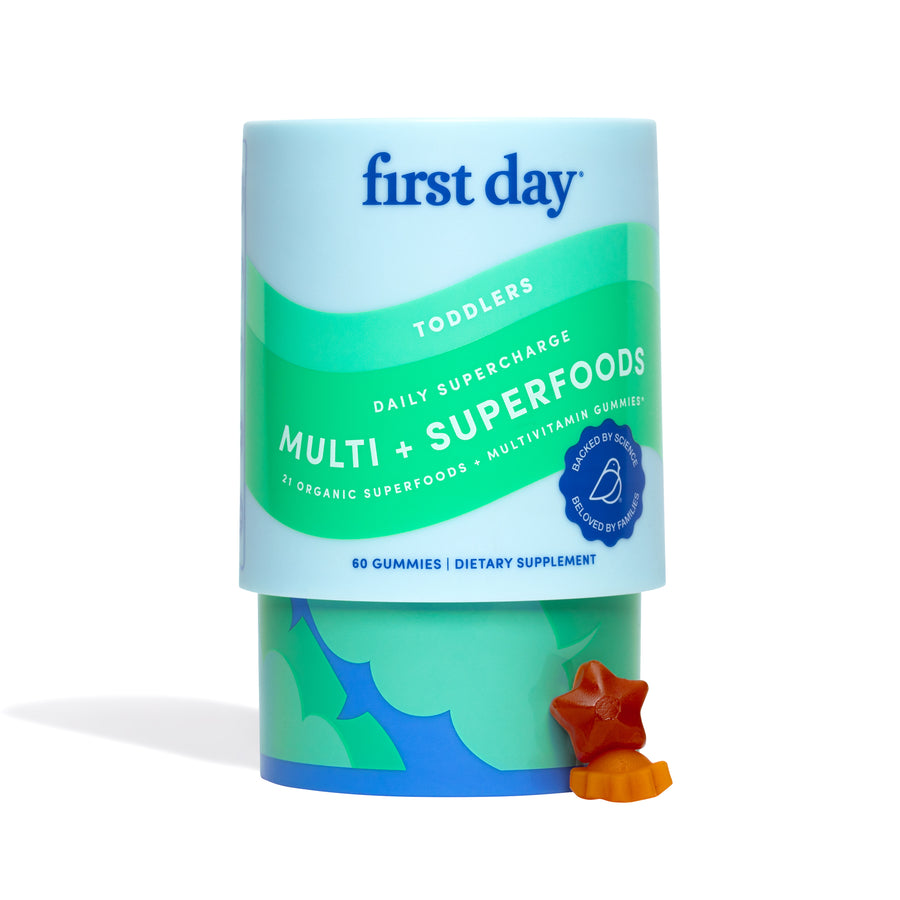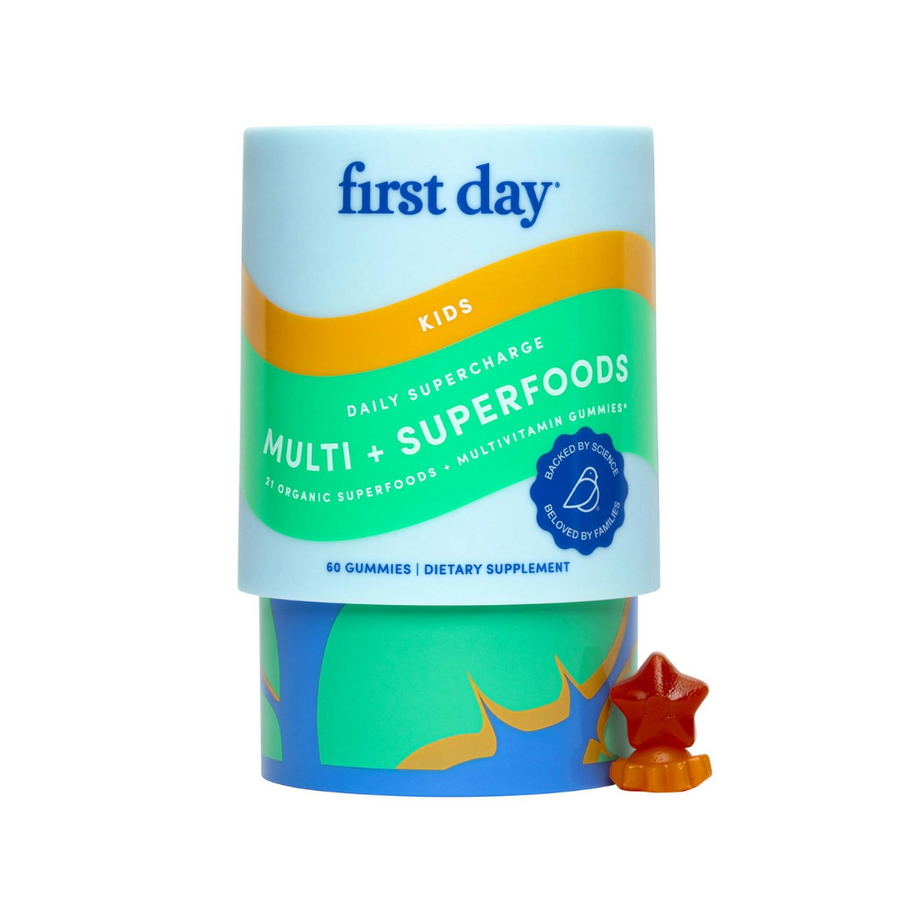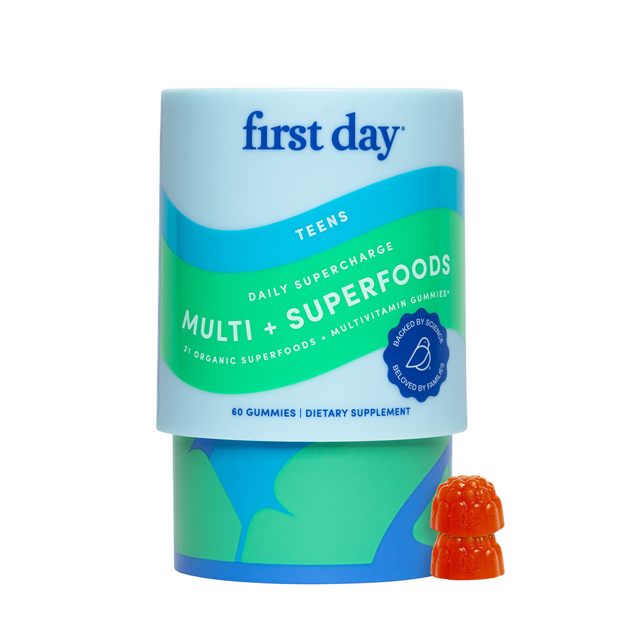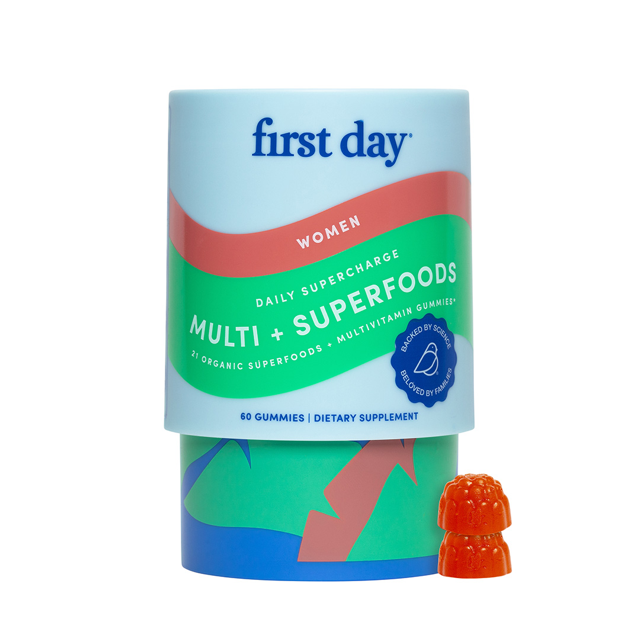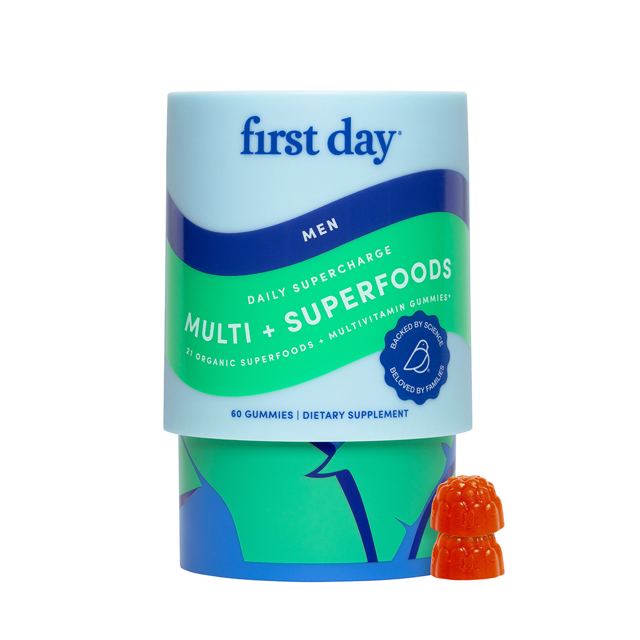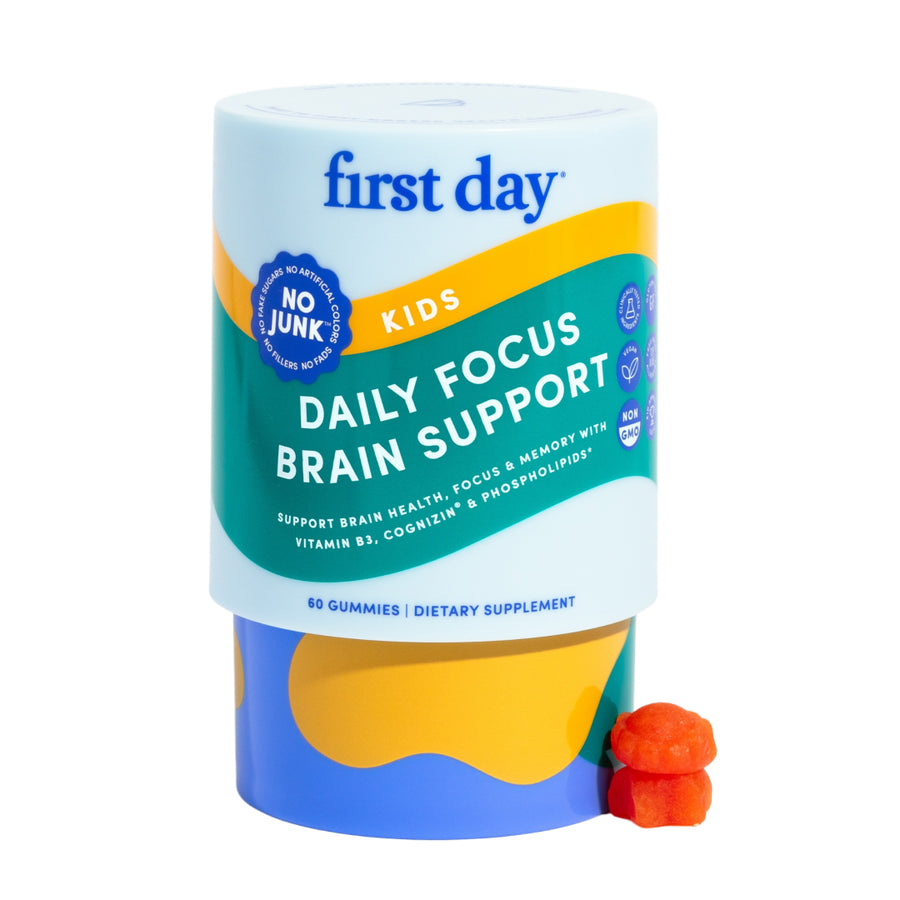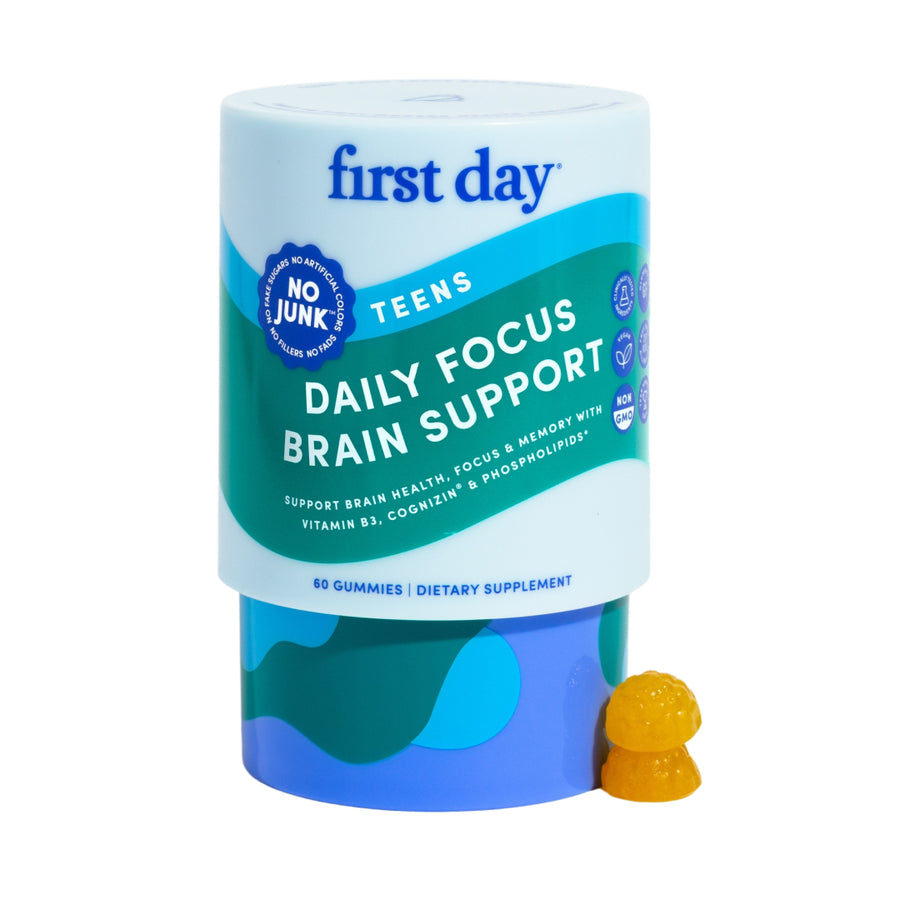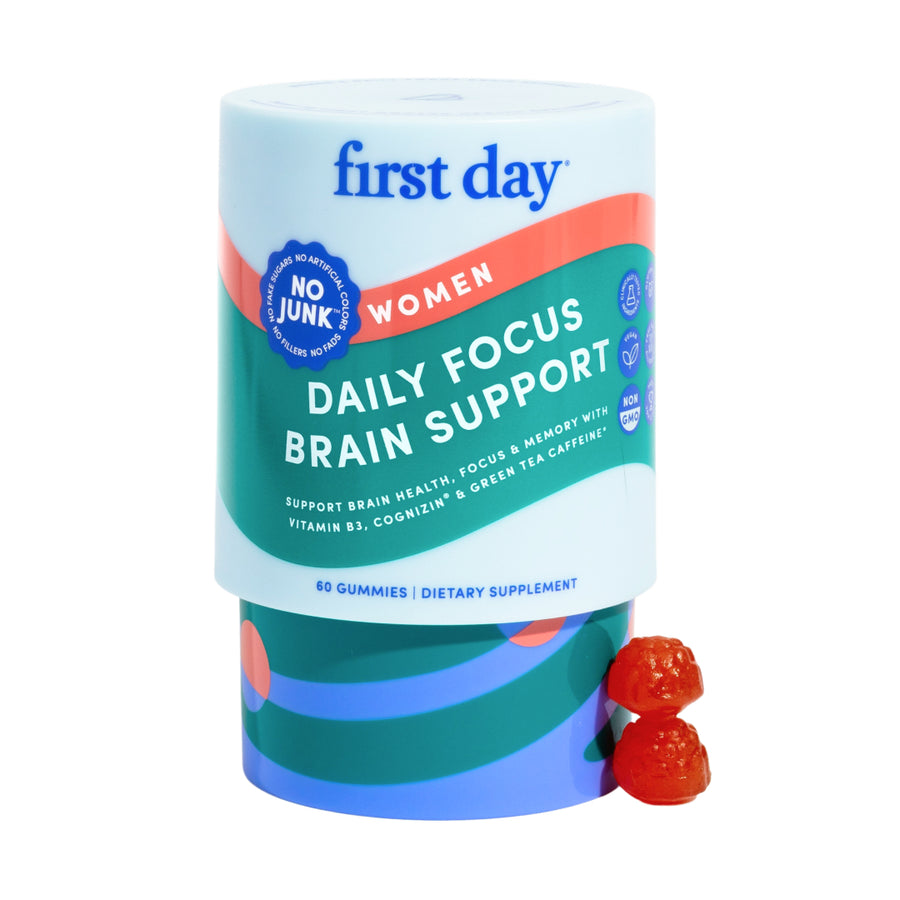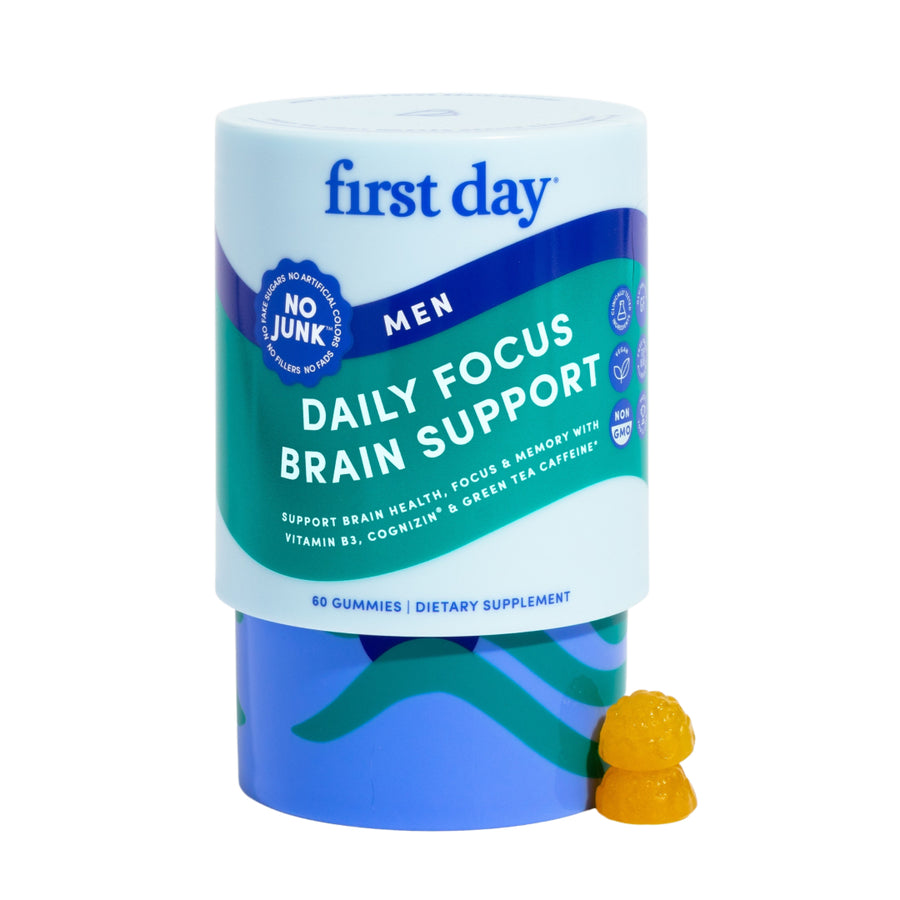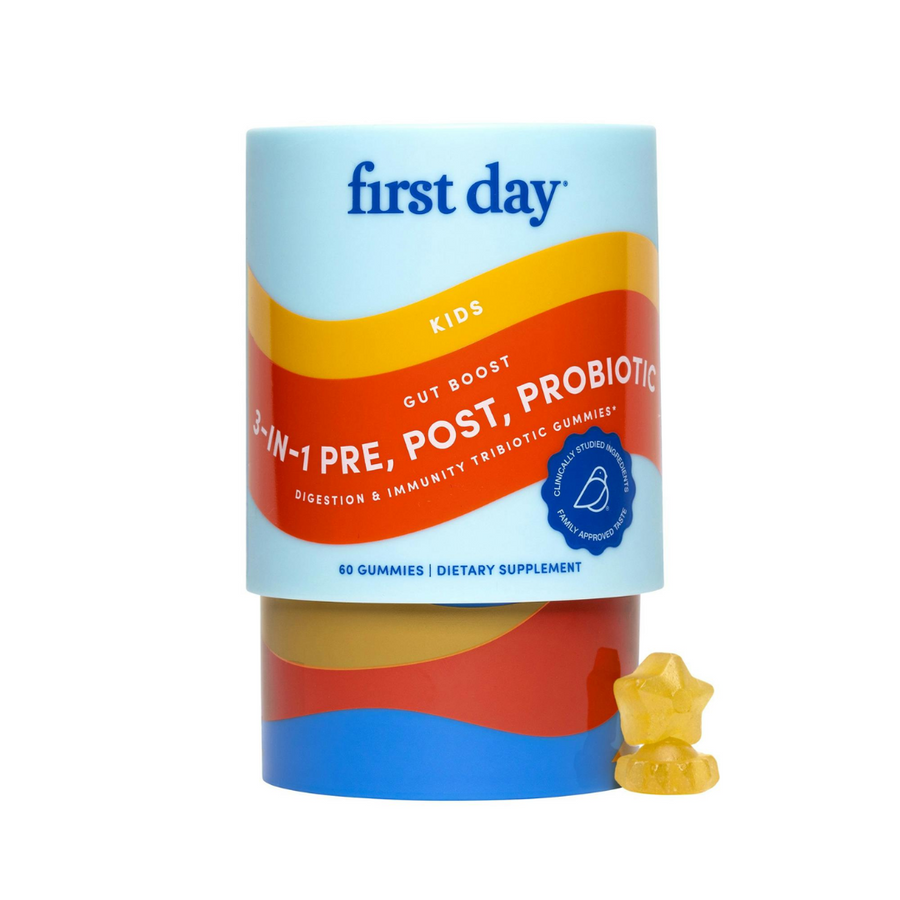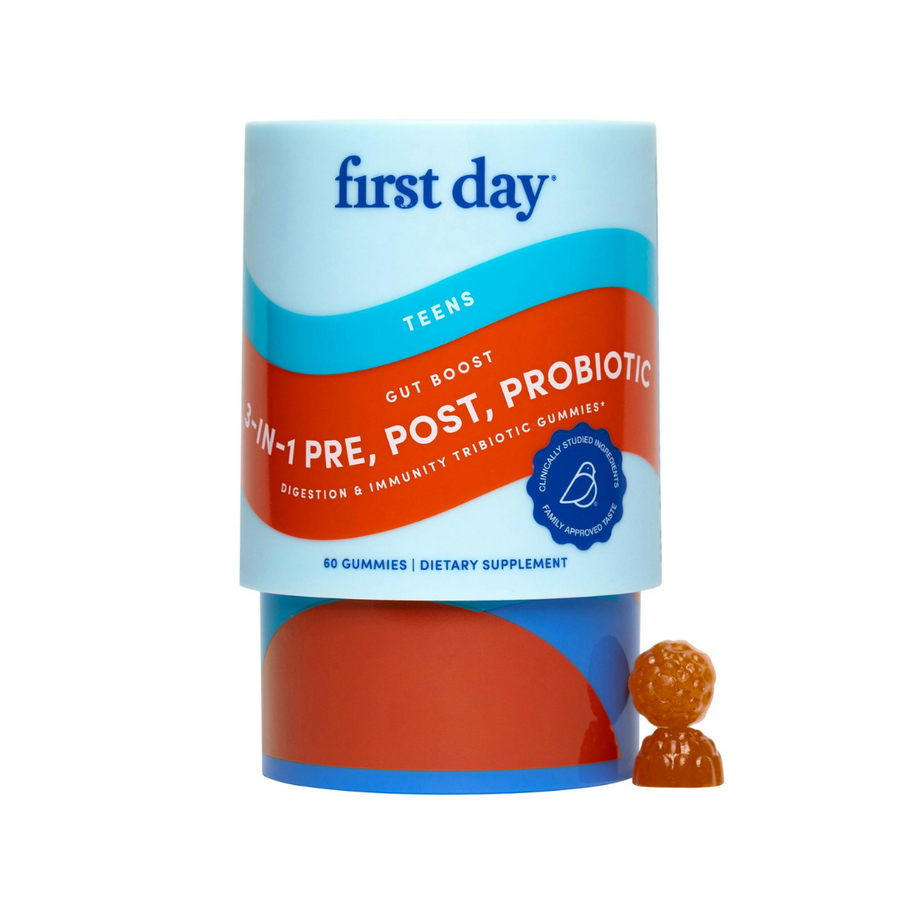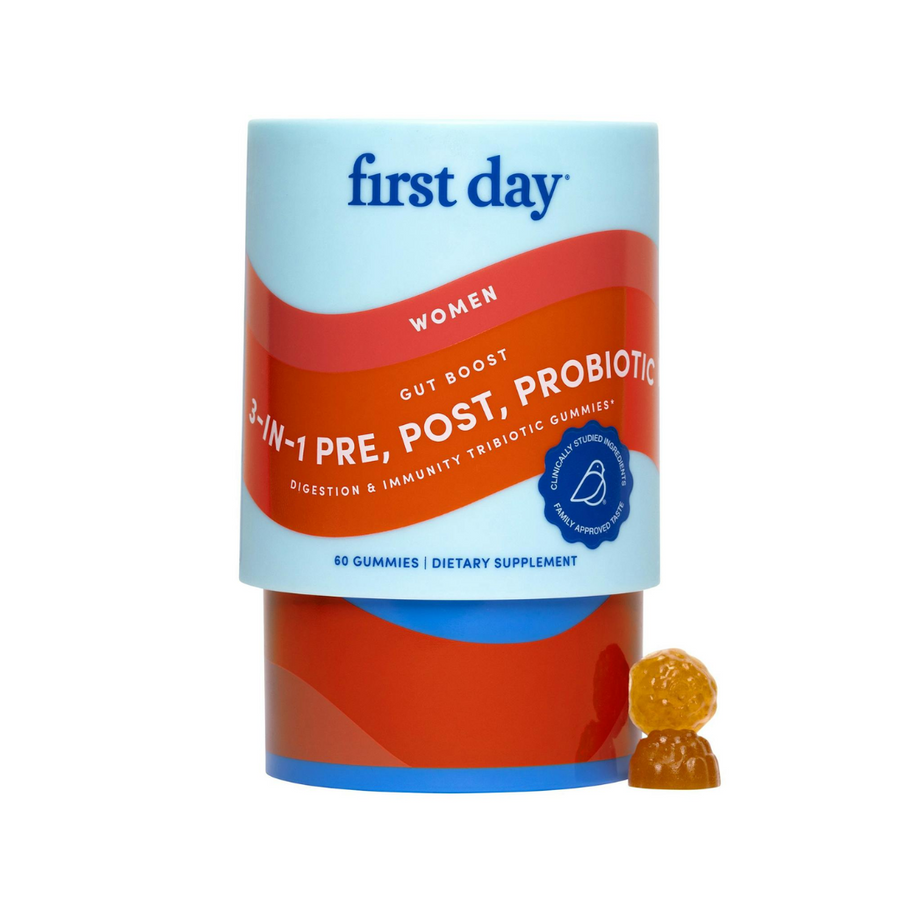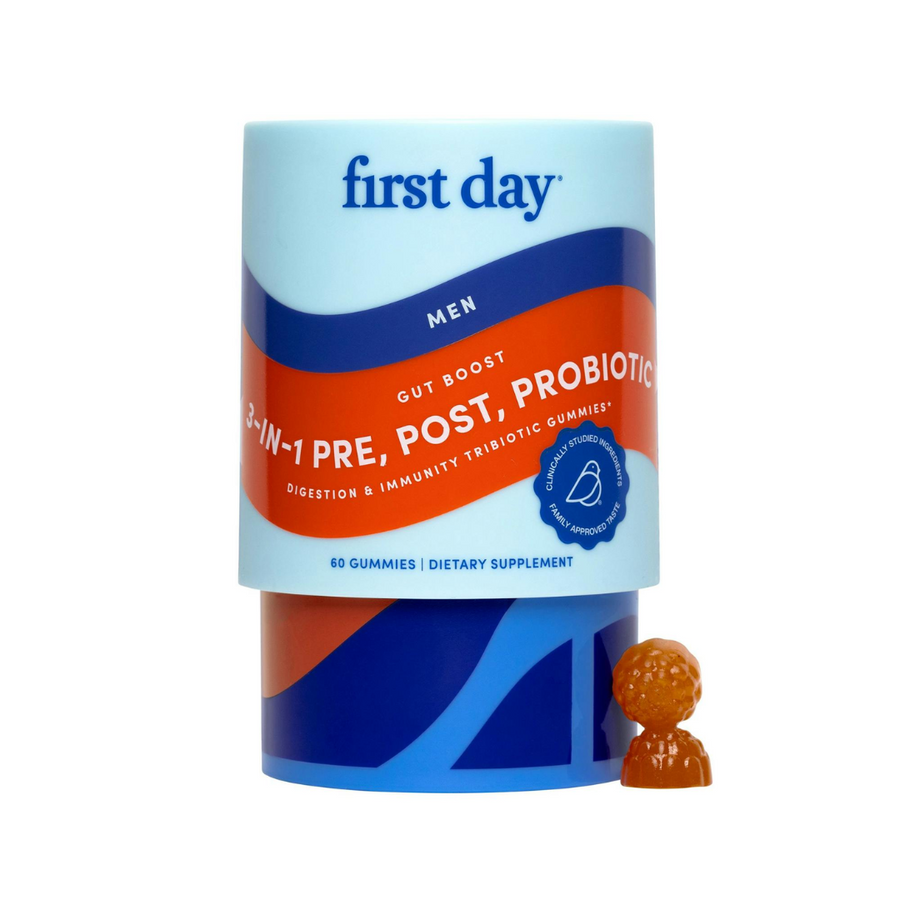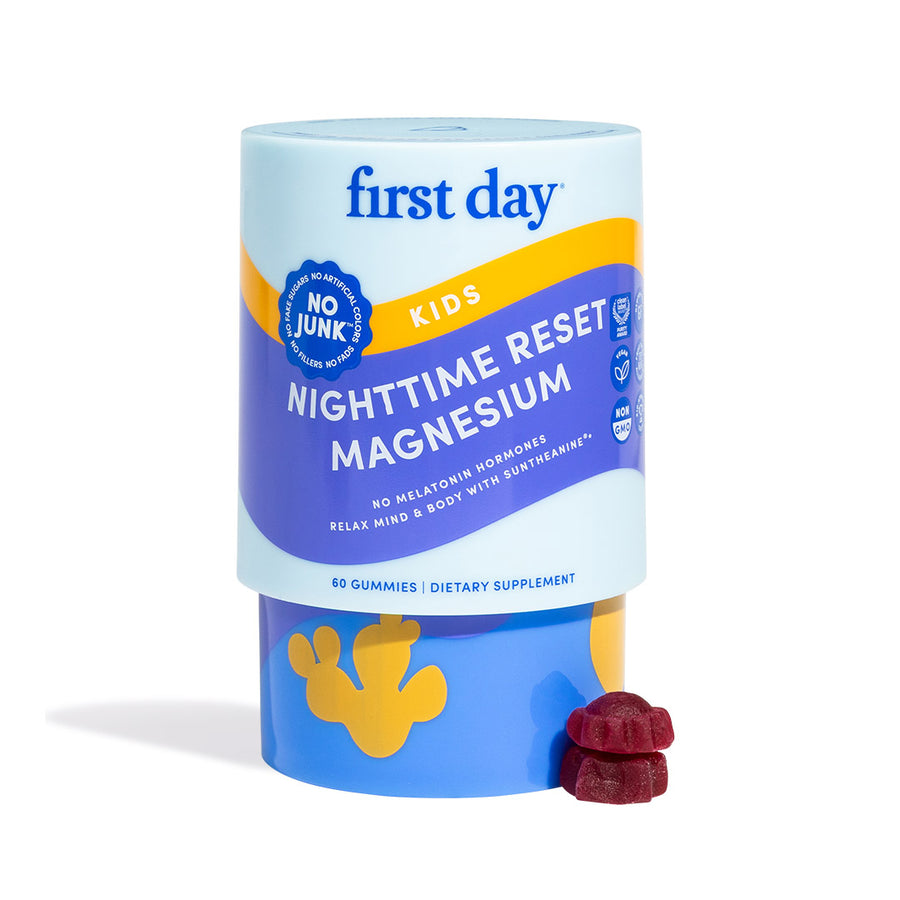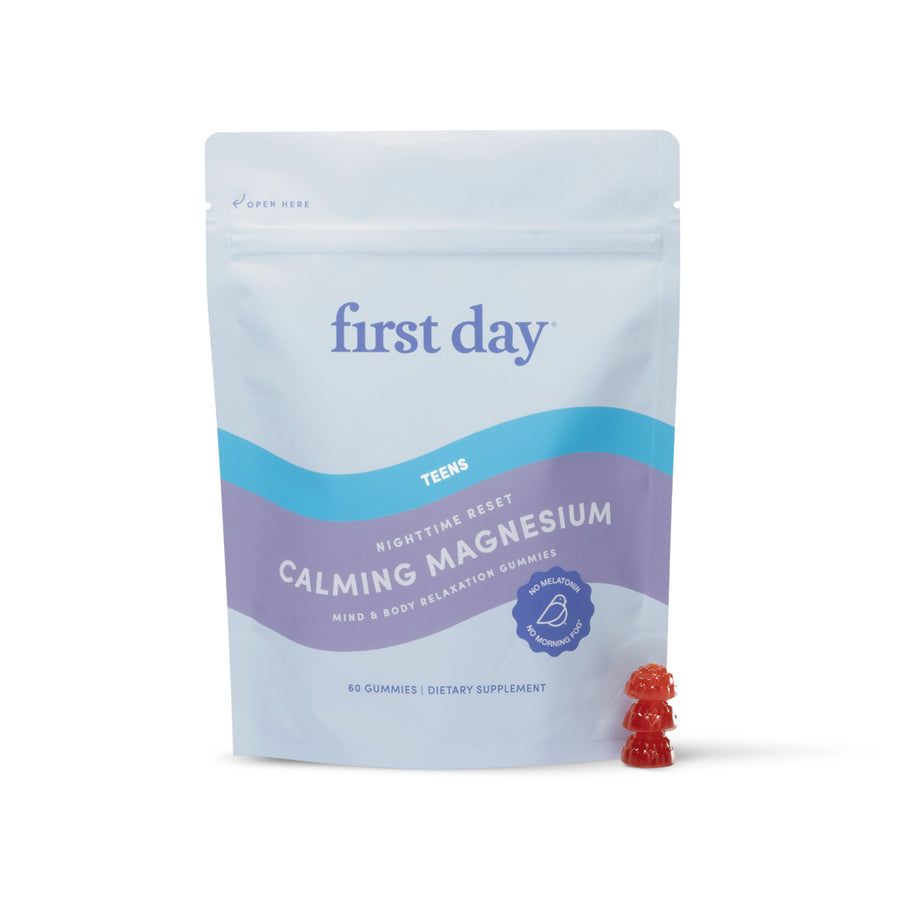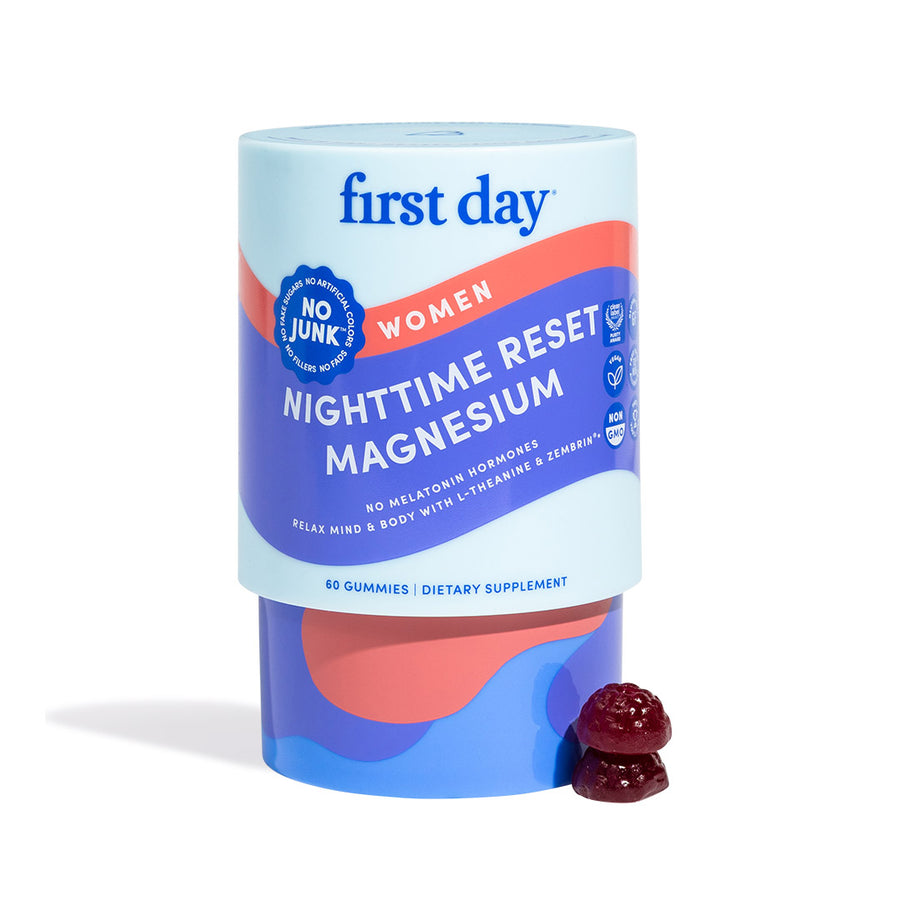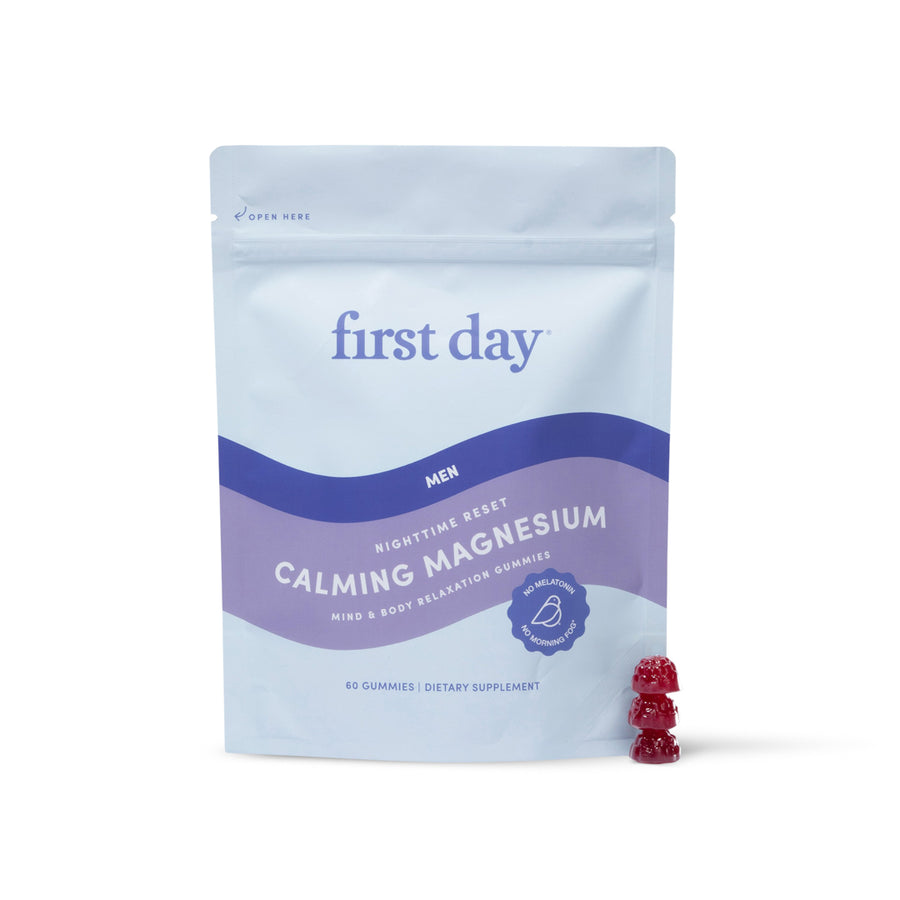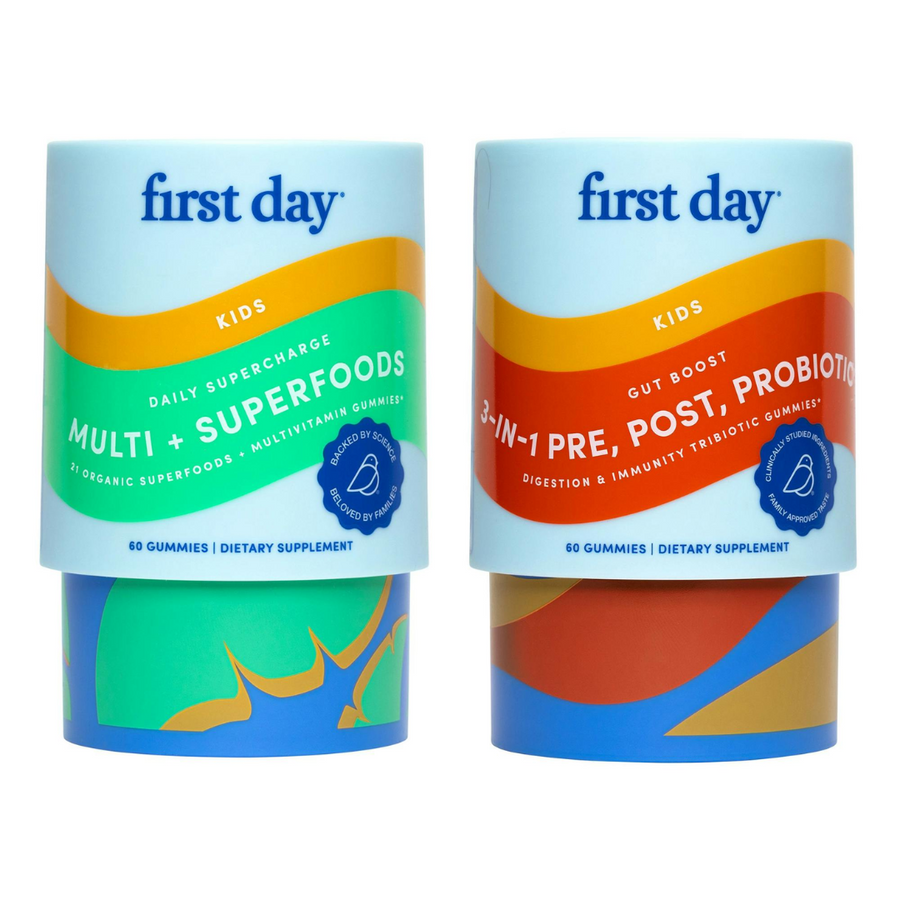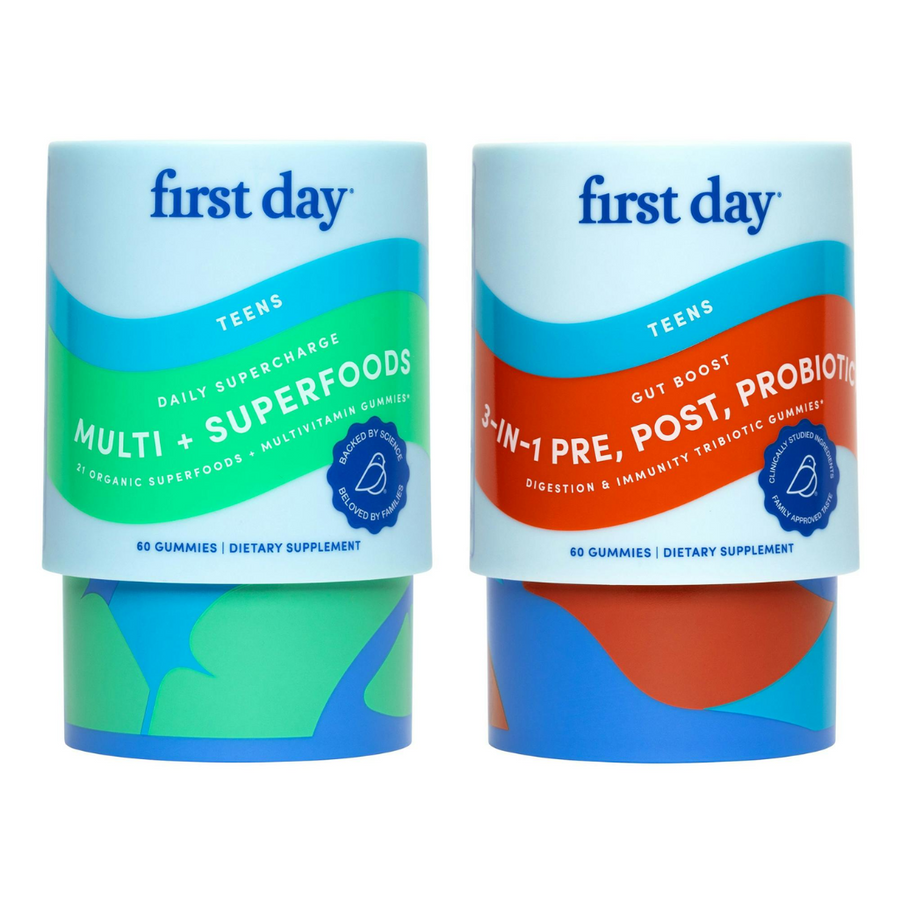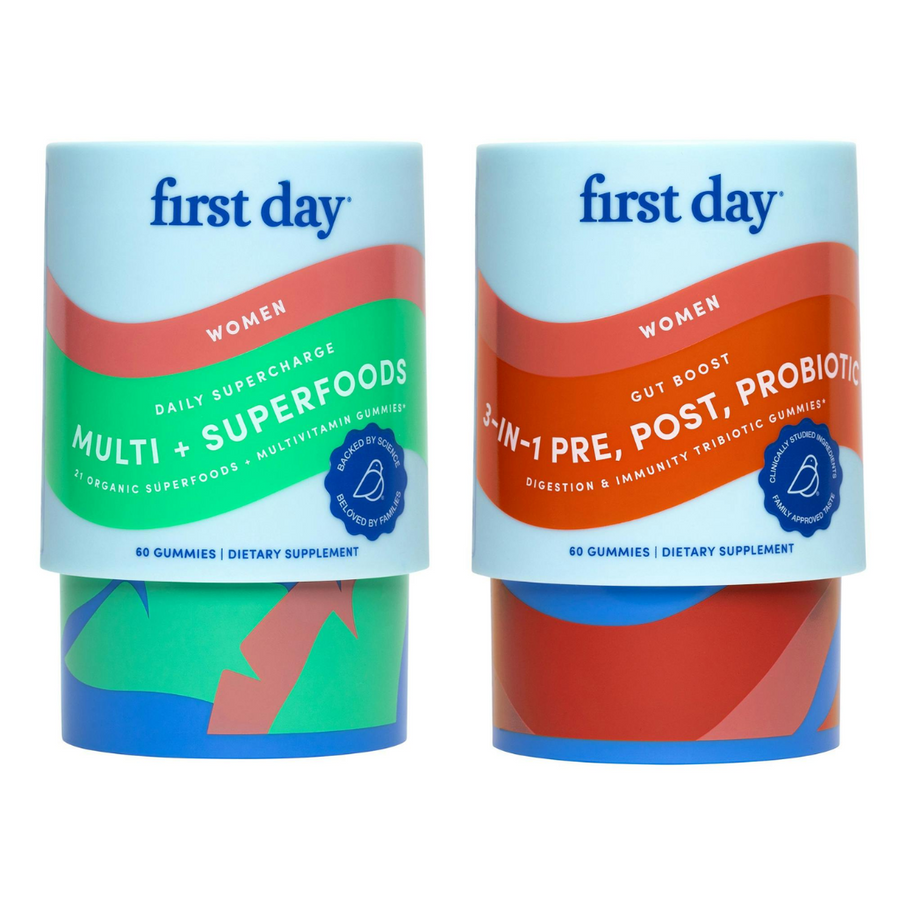Vitamins, those little wonders of nutrition, are often covered in mystery. What happens to your body when you start taking vitamins? This is a question that many of us grapple with daily. From Vitamin A to Vitamin K, we all know these powerful substances are vital for our health. But understanding their roles can feel like navigating a complex maze.
Each vitamin has unique benefits for our bodies and those of our families. This includes everything from boosting immunity to ensuring proper growth in our kids.
But despite the widespread use of vitamins, it's a startling statistic that 31% of the population has at least one vitamin deficiency. This means that most of us may be missing out on the full health benefits that a proper vitamin intake can deliver. Thus highlighting the importance of understanding what happens to your body when you start taking vitamins.
In this post, we will dig into the world of vitamins. We'll start by demystifying their complex roles while shedding light on what happens to your body when you start taking vitamins.
Understanding Vitamins
A basic understanding of vitamins can arm us, as parents, with the knowledge we need. With this knowledge, we can make sure that our family's diet is well-balanced. Each vitamin plays a role in maintaining the best health. But we must start at the basics.
Water-soluble Vitamins
Water-soluble vitamins are a group of vitamins that, as the name suggests, dissolve in water. They include the B vitamins and vitamin C. Unlike fat-soluble vitamins, they are not stored in the body. So, they need to be replenished through our diet. Each of these vitamins plays a crucial role in the body.
Fat-soluble Vitamins
On the other hand, fat-soluble vitamins include Vitamins A, D, E, and K. These vitamins are stored in the body's fatty tissue and the liver. Unlike water-soluble vitamins, they don't need to be eaten daily as long as you maintain a balanced diet.
What Are The Roles Of Each Vitamin?
Now, let's take a closer look at each vitamin and how it helps with promoting good health.
Vitamin A – The Gateway to Healthy Vision and Robust Immunity
Vitamin A plays a crucial role in maintaining normal vision and boosting the immune system.
Vitamin A is found in two forms: preformed Vitamin A and pro-vitamin A carotenoids. Preformed vitamin A is found in animal-based foods like dairy, fish, and meat (yes, liver lovers, you're covered!). While pro-vitamin A carotenoids are in plant-based foods such as fruits and veggies. This is teeming with beta-carotene (think vibrant carrots, sweet potatoes, and hearty kale).
According to medical studies, Vitamin A helps with our eyes by converting light into signals sent to our brains. This process helps us see in low light or night conditions. But that's not all! Vitamin A also aids in cell growth and differentiation. This helps with forming and maintaining vital organs like the heart, lungs, and kidneys.
Switching gears to immunity, Vitamin A dons another hat - that of an anti-inflammation powerhouse. It builds your body's defenses by promoting and regulating various immune functions.
Despite these benefits, Vitamin A deficiency is common around the globe, says the World Health Organization. Such deficiency can bring problems. This includes:
- night blindness
- a condition of dry, scaly skin known as xeroderma
- an increased risk of infections
- and in children, growth retardation (or stunting) can occur.
So, it's a no-brainer that Vitamin A should be an essential part of our diet for complete health and well-being.
B Vitamins: The Brain's Best Friends
The B vitamins are a collection of eight water-soluble vitamins. They are essential for a range of significant functions in the body.
The B vitamins include:
- Vitamin B1 (Thiamin)
- Vitamin B2 (Riboflavin)
- Vitamin B3 (Niacin)
- Vitamin B5 (Pantothenic acid)
- Vitamin B6 (Pyridoxine)
- Vitamin B7 (Biotin)
- Vitamin B9 (Folate)
- Vitamin B12 (Cobalamin)
They are well-known not only for their collective power but also for their specialties. This is particularly true when it comes to brain health and function.
According to studies, they're the masterminds behind your energy levels, brain function, and cell metabolism. They ease the making and use of neurotransmitters. Neurotransmitters are the very chemicals that dictate our mood, behavior, and memory. Feel a gradual lift in your spirits when taking multivitamins? You've got your B vitamins to thank for that!
Take Vitamin B6, for instance, it is the resident mood-boosting vitamin. This vitamin works its magic by helping the body produce serotonin and GABA (Gamma-aminobutyric acid, a calming neurotransmitter). These are neurotransmitters that help with controlling mood, sleep, and even appetite.
If deficient in Vitamin B, you may experience a range of symptoms. These can include:
- feeling weak or tired
- having difficulty concentrating or remembering things
- experiencing mood changes
- suffering from nerve problems like numbness or tingling
- and even developing anemia.
Particularly for Vitamin B12 deficiency, symptoms can escalate to severe neurological problems and blood diseases if not quickly addressed.
Remember, our bodies aren't self-producing for these vitamins. We have to keep our B-vitamin inventory stocked through our diet or supplements. We must include nutritious items like whole grains, beans, peas, and lean meats in our diet.
Vitamin C: The Collagen Builder and Immunity Warrior
When it comes to wellness, Vitamin C is a must. Its benefits are two-fold, granting your body the strength to battle illness while keeping you looking and feeling youthful.
Prized for its vital role in the production of collagen, Vitamin C is the secret ingredient to maintaining a youthful glow. Collagen is a protein that acts as a sort of 'glue' that holds our body together. So it helps in promoting skin elasticity and helping to stave off those pesky wrinkles.
Just as it supports our outward appearance, Vitamin C is also dedicated to protecting our internal health. This vigilant guardian of our immune system acts as an antioxidant. It helps in defending our bodies against harmful invaders such as infections and diseases. According to a study, Vitamin C can both prevent and treat systemic and lung infections.
But, much like the B vitamins, our bodies cannot produce Vitamin C naturally. This means we need to invite this vitamin into our bodies through dietary means. Citrus fruits such as oranges and grapefruits, strawberries, bell peppers, and spinach are all fantastic sources of Vitamin C.
This is because while severe Vitamin C deficiency is rare, mild deficiencies can cause symptoms. These symptoms can include fatigue, dry skin, and slow wound healing.
Vitamin D: The Sunshine Vitamin
Let's talk about a ray of sunshine in our vitamin world - Vitamin D! Often called the "Sunshine Vitamin", this vital nutrient is unique. This is because our bodies can produce it when exposed to sunlight. But it's not all about sunbathing. With two forms, it also plays some significant roles in our bodies.
According to scientific research, Vitamin D helps with the absorption of calcium and phosphate in our bodies. This means it plays a vital role in maintaining our skeletal health, promoting bone growth and remodeling. Without enough Vitamin D, bones can become thin, brittle, or even misshapen.
But it doesn't stop at bones. Vitamin D has been found to impact our immune system as well. A recent study suggests that Vitamin D keeps our immune system balanced.
But, despite being able to make it ourselves, Vitamin D deficiency is common, especially in colder climates. This is because there is less sunlight available. Some symptoms of Vitamin D deficiency are subtle and can be overlooked. So, it's worth noting that persistent fatigue and muscle and bone aches may be telltale signs.
Vitamin E: The Protector of Cells
Vitamin E is well-known for its role in skin health and anti-aging properties. But did you know it also has powerful antioxidant effects that benefit our cells?
Vitamin E helps prevent the formation of harmful free radicals. These free radicals can damage our cells and can lead to chronic diseases. It also supports immune function, to keep us healthy and strong.
If your body is lacking in Vitamin E, you may experience symptoms like skin dryness, muscle weakness or vision problems.
Despite its name, Vitamin E is not a solo act. It works best when combined with other nutrients like Vitamin C and Selenium. Almonds, sunflower seeds, avocados, and spinach are a handful of plentiful sources of Vitamin E.
Vitamin K: The Clotting Hero
Vitamin K is a fat-soluble vitamin that plays a vital role in blood clotting and bone health. There are two types of Vitamin K. K1 is found in leafy green vegetables. And K2 is produced by the friendly bacteria in our gut.
Without enough Vitamin K, our bodies won’t be able to form blood clots. This can lead to too much bleeding. Vitamin K also plays a role in maintaining bone density by helping our bodies use calcium. Studies show that vitamin K2 supplementation can reduce the risk of fractures. This is especially great for postmenopausal women.
But the benefits of Vitamin K don't stop there. Vitamin K also helps with reducing the risk of heart disease and promoting brain health.
Telltale signs of Vitamin K deficiency include easy bruising and excessive bleeding. But while Vitamin K deficiency is rare, we must ensure we are eating and consuming enough foods. This includes foods like kale, spinach, broccoli, and fermented soybeans. And if you have digestive conditions that affect nutrient absorption, speak with your doctor about Vitamin K supplementation.
What Happens To Your Body When You Start Taking Vitamins: The Absorption Process

Understanding how our bodies digest and absorb vitamins is an important part of the equation. After all, without proper absorption, even the best vitamins won't do much good!
Our bodies have a fantastic system in place to extract the most goodness out of every morsel of food we eat. This process begins the moment we take our first bite.
The digestion process kicks off in the mouth. This is where food is broken down into smaller pieces by our teeth and enzymes in our saliva. Our stomach then uses its own set of powerful enzymes and acidic juices to further break down the food. From here, it's a journey into the small intestine. This is the grand stage for nutrient absorption. Here, nutrients like vitamins are absorbed into our bloodstream. They are now ready to be transported and used by cells throughout our bodies.
Yet, not all vitamins are absorbed the same way. Some need a little extra help to be absorbed. This is where understanding the absorption process for specific vitamins comes into play.
Specifics of Vitamin Absorption: What You Need to Know
As mentioned earlier, different vitamins need different methods of absorption. For instance, water-soluble vitamins like Vitamin C and B are absorbed in the small intestine. Then they are transported through our bloodstream. But, fat-soluble vitamins (A, D, E, and K) need a little extra help.
Fat-soluble vitamins depend on bile, a fluid produced by our liver and stored in the gallbladder. Bile helps break down fats into smaller particles, making it easier for our bodies to absorb fat-soluble vitamins.
Another crucial aspect of absorption is gut health. Our gut contains trillions of bacteria, some of which are beneficial to our health and digestion. These bacteria help break down food and absorb nutrients, including vitamins. But, certain conditions like gut inflammation or antibiotic use can disrupt the balance of good bacteria in our gut. Naturally, this can affect nutrient absorption.
This is why you must maintain a healthy gut through a balanced diet and probiotic supplementation if needed. A healthy gut means better absorption of essential vitamins and nutrients.
Optimal Vitamin Intake: A Balancing Act
While it's easy to think that loading up on vitamins means multiplying the health benefits, this is far from the truth. Just like our bodies need a balanced diet, they also need a balanced intake of vitamins.
Fat-Soluble Vitamins and Toxicity: The Double-Edged Sword
Just as a deficiency of vitamins can be harmful, an excess of fat-soluble vitamins (A, D, E, and K) can lead to toxicity. This is because these vitamins are stored in the body's fatty tissues and liver. Over time, these vitamins can build up and may cause health problems. For instance, an overdose of Vitamin A can lead to dizziness, nausea, and even hair loss. It can eventually long-term health challenges such as bone loss and liver damage.
Another example that shows it's all about balance is Vitamin E, especially for children. Even though this vitamin is key to keeping our bodies healthy, kids don't need as much of it as adults do. That's because their Recommended Daily Allowance (RDA) for Vitamin E is quite low. What's more, children not getting enough Vitamin E is pretty rare. So, if they're already getting the right amount from their diet and then taking extra supplements, this can lead to them having too much in their system.
The tricky thing about Vitamin E is that it's fat-soluble, meaning it can be stored in the body for later use. This sounds good, right? Well, not if there's too much of it.
Overdosing on Vitamin E can be harmful, particularly for children. One major reason is that too much Vitamin E can alter the body's blood clotting system. This is vital for stopping bleeding if we or our kids get bumps, cuts or scrapes. So, it's important to be cautious when considering Vitamin E supplements for children, because, in this case, more is not always better!
Keeping all of this in mind, we've made sure to carefully formulate our Kids Daily Essentials in a way that best supports your kid’s health. Our supplement doesn't include Vitamin E, to prevent any potential risks associated with an excess of this vitamin. This decision was made with your child's safety in mind, making sure they receive the right balance of nutrients without worrying about Vitamin E toxicity.
Discover The Joy OF Our Kids Daily Essentials Today!
So how do we know the right amount of vitamins to take?
Decoding the Daily Dose: Making Sense of the RDA
Ever heard of the term 'Recommended Daily Allowance' (RDA) and wondered what it means? You're not alone. The RDA is a nutritional benchmark, created by the Food and Nutrition Board of the Institute of Medicine. It guides us on the average daily intake that satisfies the nutrient needs of nearly all (97-98%) healthy folks.
But don't be fooled! This isn't a one-size-fits-all approach. We're all unique, with our nutrient needs determined by variables like age, sex, health status, and medication usage.
Take pregnant women, for instance. Due to the development of the fetus, they need a higher quota of specific vitamins like folic acid and iron. And our little ones? They might require a multivitamin boost to keep hidden hunger at bay and plug any nutrient gaps in their diet.
Striking the Balance: Diet and Supplements
A nutritious, balanced diet filled with vitamin-packed foods is the cornerstone of our wellness. It offers an abundance of essential nutrients. However, our fondness for handy, quick-to-eat meals, and the unspoken truth of vanishing nutrients in our foods, means our dietary intake might not always hit the mark.
Vanishing Nutrients: A Modern Dilemma
Here's a surprising fact you might not be familiar with. The term 'vanishing nutrients' is used to describe a troubling trend in our food supply. The nutrient levels in our food are dwindling due to an unfortunate side effect of modern farming. Overfarming, along with the widespread use of synthetic fertilizers, has resulted in nutrient-poor soils.
So sadly, the crops grown in these depleted soils are not as nutrient-dense as they used to be. This means the fruits, veggies, and grains we eat today don't pack the same nutritional punch they did generations ago. Therefore, even with a balanced diet, it's becoming harder to get all the vitamins and minerals our bodies need.
Supplements: Filling in the Gaps

This is where dietary supplements come in.
Supplements can be an excellent way to fill in the nutrient gaps left by our nutrient-poor diets. They can deliver a concentrated dose of vitamins and minerals, making sure our bodies get the nutrients they need to thrive. But, remember that supplements are just that – a supplement to a healthy diet, not a replacement.
That's why it's so important to strike a balance between obtaining nutrients from a varied, wholesome die. Then you can use supplements to make up for what our diets may lack.
And remember, before starting any dietary supplement regimen, you must consult with your doctor. They can help you tailor a plan that fits your unique nutritional needs and health goals. Hence ensuring that both diet and supplements work in harmony.
First Day vitamins are delicious vegan gummy multivitamins that the whole family can enjoy. Our multivitamins are more than just a treat; they deliver the necessary vitamins in a form that's fun to eat. These gummies are an excellent choice for children who might be picky eaters, not to mention adults who want to add some joy to their daily vitamin routine.
So, with First Day, you're not just getting your daily nutrients; you're having fun while you're at it!
Learn More About First Day Multivitamins Today!
The Role of Genetics: The Vitamin Connection
Ever wondered why some folks seem to get all the nutrients they need from their diet, while others never feel satisfied? It turns out our genetic makeup plays a huge role in determining how well we absorb and use vitamins and minerals.
Each body is different, and each body reacts to vitamins and minerals in its unique way. Some people might absorb certain nutrients well, while others might not. It all comes down to our genes – the tiny bits of information that instruct our body on how to function.
When it comes to nutrition, genes can determine how well our bodies can absorb, distribute, use, and get rid of nutrients. This is what we call 'nutritional genomics' or 'nutrigenomics'. In simple terms, it is the study of the relationship between the human genome, nutrition, and health.
Personalized Nutrition: The Future of Healthy Eating
And that's where the concept of personalized nutrition comes in. Personalized nutrition is a dietary plan tailored to a person’s genetic makeup. It's about eating the right foods, in the right amounts, at the right times, specifically designed for your body's needs.
So, let’s say you have a genetic predisposition to Vitamin D deficiency. This means your body doesn’t absorb or use Vitamin D as effectively as it should. In this case, your personalized nutrition plan may recommend a higher intake of Vitamin D or Vitamin D supplements.
On the flip side, if your genes allow your body to use Vitamin B12 well, you might not need as much of this vitamin in your diet.
Remember, just because you have a genetic predisposition to a deficiency doesn’t mean you will have that deficiency. It just means you have a higher chance. That's why it's important to work with your doctor to understand your genetic predispositions and develop a personalized nutrition plan. What you eat is important, but how your body processes what you eat is equally vital.
Getting the Most Out of Vitamins: Synergy vs. Antagonism
The next stage of understanding what happens to your body when you start taking vitamins is looking at how well they work together. You see, it's not just about each vitamin doing its own thing. They also interact with each other, almost like a sports team.
Sometimes, they work together to get the job done (this is called 'synergy'). An example of this is the pair of Vitamin D and Calcium. Vitamin D helps your body absorb calcium in the intestines and promotes bone mineralization, which makes bones stronger. Without enough Vitamin D, even a diet high in calcium could be not enough. This is because your body would not be able to absorb and use this critical mineral well.
But other times, they can block each other's actions (we call this 'antagonism'). An example is the interaction between Vitamin C and copper. High doses of Vitamin C can interfere with the body's ability to absorb copper, an essential micro-nutrient. This means that if you are taking large amounts of Vitamin C, you may need to monitor and perhaps increase your copper intake accordingly.
The Impact of Lifestyle: Beyond Vitamins
You must also understand that taking vitamins isn't the only thing that matters when it comes to staying healthy. When it comes to what happens to your body when you start taking vitamins, our daily choices matter. For instance how much we exercise, how well we sleep, and other habits are also super important.
Exercise and Vitamin Utilization
Did you know that regular exercise can affect the way your body uses vitamins? It's true! Exercise increases the oxygen demand, which in turn creates more free radicals. Free radicals are molecules that have an unpaired electron and cause damage to cells when they accumulate. Antioxidants like Vitamin C and E help neutralize these free radicals, protecting our cells from harm. So, if you're someone who exercises regularly, you must make sure your Vitamin C and E intake is enough.
But exercise can also affect other vitamins. For example, intense physical activity can lessen our body’s stores of Vitamin B1 (thiamine). This is because thiamine helps convert carbohydrates or sugar into energy, which we use during exercise. In this case, increasing your thiamine levels with supplements or dietary sources is a must for maintaining your energy levels and avoiding deficiency.
Smoking and Alcohol: Detrimental Effects on Vitamin Utilization
Smoking and drinking too much alcohol can also affect the way our bodies use vitamins. For example, smoking increases the body's need for Vitamin C. This is because it is an antioxidant that helps neutralize the extra free radicals produced by inhaling cigarette smoke. As a result, smokers may need a higher intake of Vitamin C to maintain normal levels in their bodies.
Drinking too much alcohol, on the other hand, can lead to Vitamin B deficiencies. This is because alcohol interferes with the absorption of several key nutrients like folate and thiamine. Plus, excessive alcohol intake can also damage the liver , which plays a crucial role in storing and metabolizing vitamins.
Final Thoughts: Our Body's Unique Needs for Vitamins
So what happens to your body when you start taking vitamins? Well, it's a complex relationship between our genes, lifestyle choices, and the interactions among different vitamins. By understanding these factors, we can customize our diets to meet our body's unique needs for vitamins.
And remember, always consult with your doctor before starting any new vitamin regimen to ensure you are getting the right nutrients in the right amounts.
Also, don't forget to experience the difference with First Day multivitamins. Our tasty gummy vitamins are carefully designed to meet your family's unique nutritional needs. Don't wait, take the first step towards better health today!
Learn More About First Day Multivitamins Today!
References:
Bird, J., Murphy, R., Ciappio, E., & McBurney, M. (2017). Risk of Deficiency in Multiple Concurrent Micronutrients in Children and Adults in the United States. Nutrients, 9(7), 655. https://doi.org/10.3390/nu9070655
Lykstad, J., & Sharma, S. (2021). Biochemistry, Water Soluble Vitamins. PubMed; StatPearls Publishing. https://www.ncbi.nlm.nih.gov/books/NBK538510/#:~:text=There%20are%20nine%20water%2Dsoluble
Health, N. R. C. (US) C. on D. and. (1989). Fat-Soluble Vitamins. In www.ncbi.nlm.nih.gov. National Academies Press (US). https://www.ncbi.nlm.nih.gov/books/NBK218749/#:~:text=Small%20amounts%20of%20vitamins%20are
Office of Dietary Supplements - Vitamin A and Carotenoids. (n.d.). Ods.od.nih.gov. https://ods.od.nih.gov/factsheets/VitaminA-HealthProfessional/#:~:text=The%20human%20diet%20contains%20two
Sajovic, J., Meglič, A., Glavač, D., Markelj, Š., Hawlina, M., & Fakin, A. (2022). The Role of Vitamin A in Retinal Diseases. International Journal of Molecular Sciences, 23(3), 1014. https://doi.org/10.3390/ijms23031014
Ross, A. C., & Gardner, E. M. (1994). The function of vitamin A in cellular growth and differentiation, and its roles during pregnancy and lactation. Advances in Experimental Medicine and Biology, 352, 187–200. https://doi.org/10.1007/978-1-4899-2575-6_15
Stephensen, C. B. (2001). Vitamin A, infection, and immune function. Annual Review of Nutrition, 21, 167–192. https://doi.org/10.1146/annurev.nutr.21.1.167
Vitamin A deficiency. (n.d.). Www.who.int. https://www.who.int/data/nutrition/nlis/info/vitamin-a-deficiency#:~:text=Vitamin%20A%20deficiency%20results%20from
Kennedy, D. (2016). B Vitamins and the Brain: Mechanisms, Dose and Efficacy—A Review. Nutrients, 8(2), 68. https://doi.org/10.3390/nu8020068
Australia, H. (2022, June 1). Vitamin B deficiency. Www.healthdirect.gov.au. https://www.healthdirect.gov.au/vitamin-b-deficiency
NHS Choices. (2019, May 23). Symptoms - Vitamin B12 or folate deficiency anaemia. NHS. https://www.nhs.uk/conditions/vitamin-b12-or-folate-deficiency-anaemia/symptoms/
DePhillipo, N. N., Aman, Z. S., Kennedy, M. I., Begley, J. P., Moatshe, G., & LaPrade, R. F. (2018). Efficacy of Vitamin C Supplementation on Collagen Synthesis and Oxidative Stress After Musculoskeletal Injuries: A Systematic Review. Orthopaedic Journal of Sports Medicine, 6(10), 232596711880454. https://doi.org/10.1177/2325967118804544
Carr, A. C., & Maggini, S. (2017). Vitamin C and immune function. Nutrients, 9(11), 1211. https://www.ncbi.nlm.nih.gov/pmc/articles/PMC5707683/
Branch, N. S. C. and O. (2023, May 5). Calcium and Vitamin D: Important for Bone Health. National Institute of Arthritis and Musculoskeletal and Skin Diseases. https://www.niams.nih.gov/health-topics/calcium-and-vitamin-d-important-bone-health#:~:text=Vitamin%20D%20promotes%20bone%20health
Prietl, B., Treiber, G., Pieber, T., & Amrein, K. (2013). Vitamin D and Immune Function. Nutrients, 5(7), 2502–2521. https://doi.org/10.3390/nu5072502
Kashi, Z., Saeedian, F. sima, Akha, O., Gorgi, M. ali H., Emadi, S. fatemeh, & Zakeri, H. (2011). Vitamin D deficiency prevalence in summer compared to winter in a city with high humidity and a sultry climate. Endokrynologia Polska, 62(3), 249–251. https://pubmed.ncbi.nlm.nih.gov/21717408/
Rizvi, S., Raza, S. T., Ahmed, F., Ahmad, A., Abbas, S., & Mahdi, F. (2014). The role of vitamin e in human health and some diseases. Sultan Qaboos University Medical Journal, 14(2), e157-65.
Office of Dietary Supplements - Vitamin E. (n.d.). Ods.od.nih.gov. https://ods.od.nih.gov/factsheets/VitaminE-HealthProfessional/#:~:text=Vitamin%20E%20is%20a%20fat
Compounds, I. of M. (US) P. on D. A. and R. (2000). Vitamin C, Vitamin E, Selenium, and β-Carotene and Other Carotenoids: Overview, Antioxidant Definition, and Relationship to Chronic Disease. In www.ncbi.nlm.nih.gov. National Academies Press (US). https://www.ncbi.nlm.nih.gov/books/NBK225471/
National Institutes of Health. (2021, March 29). Office of Dietary Supplements - Vitamin K. Nih.gov. https://ods.od.nih.gov/factsheets/vitaminK-HealthProfessional/
Vermeer, C. V. (2012). Vitamin K: the effect on health beyond coagulation – an overview. Food & Nutrition Research, 56(1), 5329. https://doi.org/10.3402/fnr.v56i0.5329
Cheung, A. M., Tile, L., Lee, Y., Tomlinson, G., Hawker, G., Scher, J., Hu, H., Vieth, R., Thompson, L., Jamal, S., & Josse, R. (2008). Vitamin K Supplementation in Postmenopausal Women with Osteopenia (ECKO Trial): A Randomized Controlled Trial. PLoS Medicine, 5(10), e196. https://doi.org/10.1371/journal.pmed.0050196
Hariri, E., Kassis, N., Iskandar, J.-P., Schurgers, L. J., Saad, A., Abdelfattah, O., Bansal, A., Isogai, T., Harb, S. C., & Kapadia, S. (2021). Vitamin K2—a neglected player in cardiovascular health: a narrative review. Open Heart, 8(2), e001715. https://doi.org/10.1136/openhrt-2021-001715
Alisi, L., Cao, R., De Angelis, C., Cafolla, A., Caramia, F., Cartocci, G., Librando, A., & Fiorelli, M. (2019). The Relationships Between Vitamin K and Cognition: A Review of Current Evidence. Frontiers in Neurology, 10. https://doi.org/10.3389/fneur.2019.00239
Eden, R. E., Daley, S. F., & Coviello, J. M. (2023). Vitamin K Deficiency. PubMed; StatPearls Publishing. https://www.ncbi.nlm.nih.gov/books/NBK536983/#:~:text=Certain%20medical%20conditions%20that%20affect
National Institute of Diabetes and Digestive and Kidney Diseases. (2023, May 11). Your Digestive System & How It Works. NIDDK. https://www.niddk.nih.gov/health-information/digestive-diseases/digestive-system-how-it-works
Absorption of Vitamins. (n.d.). Www.vivo.colostate.edu. http://www.vivo.colostate.edu/hbooks/pathphys/digestion/smallgut/absorb_vitamins.html#:~:text=The%20fat%20soluble%20vitamins%20A
Albahrani, A. A., & Greaves, R. F. (2016). Fat-Soluble Vitamins: Clinical Indications and Current Challenges for Chromatographic Measurement. The Clinical Biochemist Reviews, 37(1), 27–47. https://www.ncbi.nlm.nih.gov/pmc/articles/PMC4810759/#:~:text=The%20fat%2Dsoluble%20vitamins%20(FSV
Hundt, M., Basit, H., & John, S. (2019, May 5). Physiology, Bile Secretion. Nih.gov; StatPearls Publishing. https://www.ncbi.nlm.nih.gov/books/NBK470209/
Ensari, A. (2014). The Malabsorption Syndrome and Its Causes and Consequences. Pathobiology of Human Disease, 1266–1287. https://doi.org/10.1016/B978-0-12-386456-7.03804-1
Fat-Soluble Vitamins: A, D, E, and K - 9.315. (n.d.). Extension. Retrieved November 27, 2023, from https://extension.colostate.edu/topic-areas/nutrition-food-safety-health/fat-soluble-vitamins-a-d-e-and-k-9-315/#:~:text=Summary-
Olson, J. M., & Goyal, A. (2020). Vitamin A Toxicity. PubMed; StatPearls Publishing. https://www.ncbi.nlm.nih.gov/books/NBK532916/
National Institutes of Health. (2021, March 26). Office of Dietary Supplements - Vitamin E. Nih.gov. https://ods.od.nih.gov/factsheets/VitaminE-HealthProfessional/
Owen, K. N., & Dewald, O. (2021). Vitamin E Toxicity. PubMed; StatPearls Publishing. https://www.ncbi.nlm.nih.gov/books/NBK564373/
Office of Dietary Supplements - Nutrient Recommendations and Databases. (n.d.). Ods.od.nih.gov. https://ods.od.nih.gov/HealthInformation/nutrientrecommendations.aspx#:~:text=Recommended%20Dietary%20Allowance%20(RDA)%3A
Jack, A. (n.d.). AMERICA’S VANISHING NUTRIENTS: Decline in Fruit and Vegetable Quality Poses Serious Health and Environmental Risks. Retrieved November 27, 2023, from https://www.betterbones.com/wp-content/uploads/2016/03/Americas-vanishing-nutrients-Decline-in-fruit-and-vegetable-quality-poses-serious-health-and-environmental-risks.pdf
Nutritional Genomics - an overview | ScienceDirect Topics. (n.d.). Www.sciencedirect.com. https://www.sciencedirect.com/topics/biochemistry-genetics-and-molecular-biology/nutritional-genomics#:~:text=Nutritional%20genomics%20is%20the%20application
German, J. B., Zivkovic, A. M., Dallas, D. C., & Smilowitz, J. T. (2011). Nutrigenomics and Personalized Diets: What Will They Mean for Food? Annual Review of Food Science and Technology, 2, 97–123. https://doi.org/10.1146/annurev.food.102308.124147
Nerger, E. (2016, November 25). Vitamin D Deficiency – Genetics, Sunlight, or Diet? Advanced Science News. https://www.advancedsciencenews.com/vitamin-d-and-the-sun/#:~:text=The%20genetic%20influence%20on%20vitamin
Heaney, R. P. (2008). Vitamin D and calcium interactions: functional outcomes. The American Journal of Clinical Nutrition, 88(2), 541S544S. https://doi.org/10.1093/ajcn/88.2.541s
Jiang, R., Sui, Y., Hong, J., Niimi, M., Yan, Q., Shi, Z., & Yao, J. (2023). The Combined Administration of Vitamin C and Copper Induces a Systemic Oxidative Stress and Kidney Injury. Biomolecules, 13(1), 143–143. https://doi.org/10.3390/biom13010143
Institute of Medicine (US) Committee on Military Nutrition Research, & Marriott, B. M. (2011). The Effect of Exercise and Heat on Vitamin Requirements. Nih.gov; National Academies Press (US). https://www.ncbi.nlm.nih.gov/books/NBK236216/
Traber, M. G., & Stevens, J. F. (2011). Vitamins C and E: Beneficial effects from a mechanistic perspective. Free Radical Biology and Medicine, 51(5), 1000–1013. https://doi.org/10.1016/j.freeradbiomed.2011.05.017
Woolf, K., & Manore, M. M. (2006). B-Vitamins and Exercise: Does Exercise Alter Requirements? International Journal of Sport Nutrition and Exercise Metabolism, 16(5), 453–484. https://doi.org/10.1123/ijsnem.16.5.453
Smoking and Vitamin C: Clarifying the concerns. (n.d.). https://www.sun.ac.za/english/faculty/healthsciences/nicus/Documents/Files/Files/Fact_sheets/Vit%20C%20and%20Smoking.pdf
Hoyumpa, A. M. (1986). Mechanisms of Vitamin Deficiencies in Alcoholism. Alcoholism: Clinical and Experimental Research, 10(6), 573–581. https://doi.org/10.1111/j.1530-0277.1986.tb05147.x
Alcohol-related liver disease. (2017, October 20). Nhs.uk. https://www.nhs.uk/conditions/alcohol-related-liver-disease-arld/#:~:text=The%20liver%20can%20develop%20new

